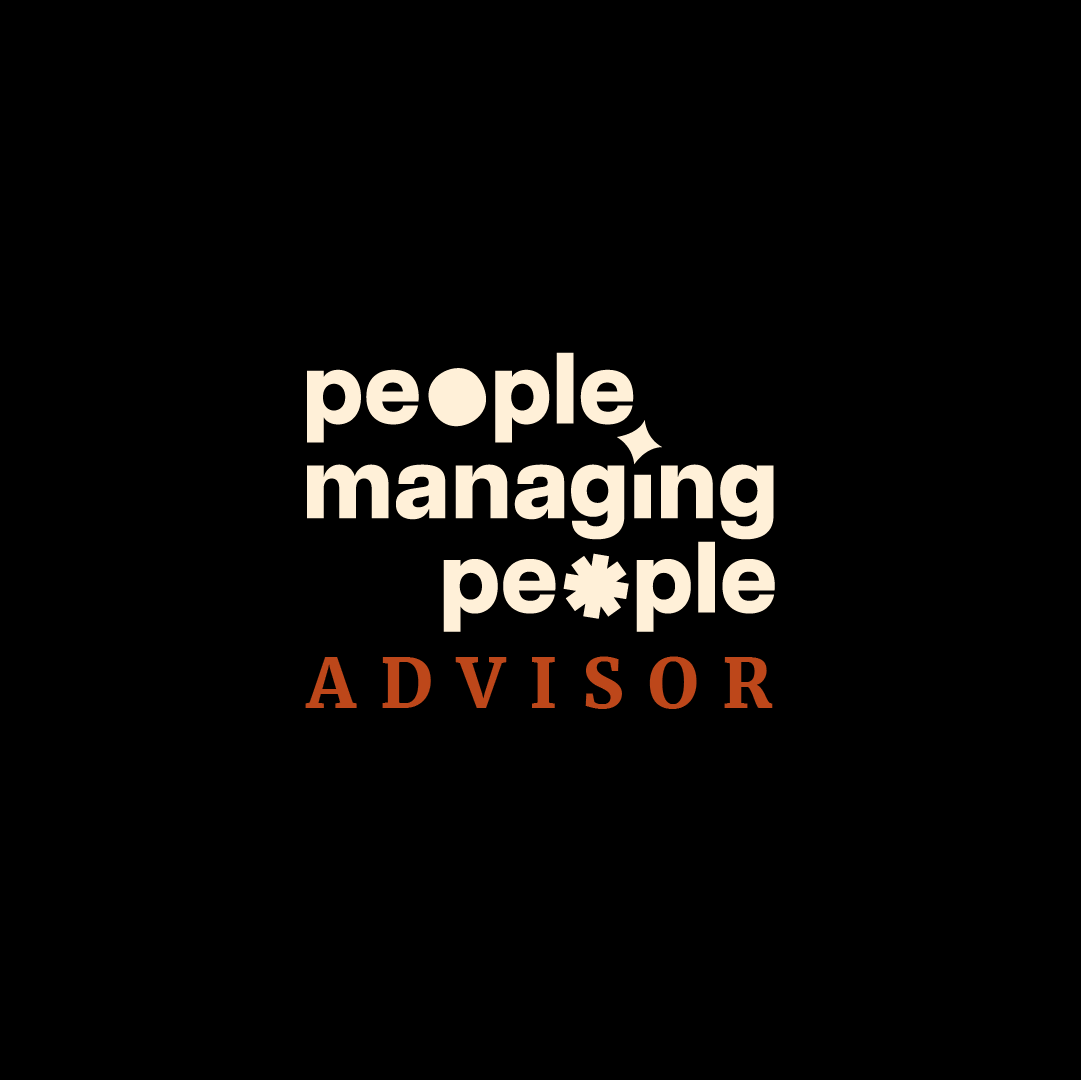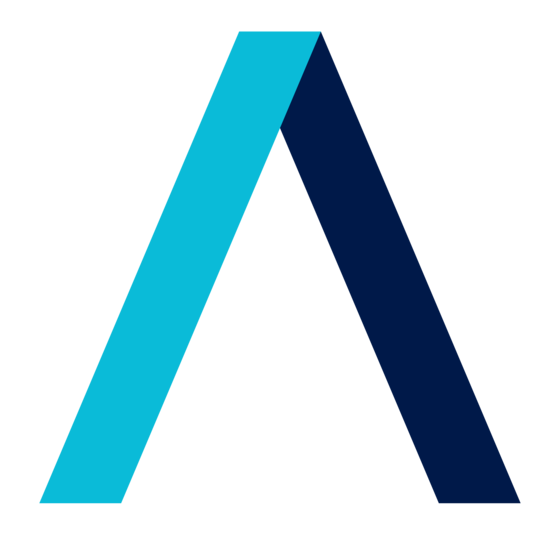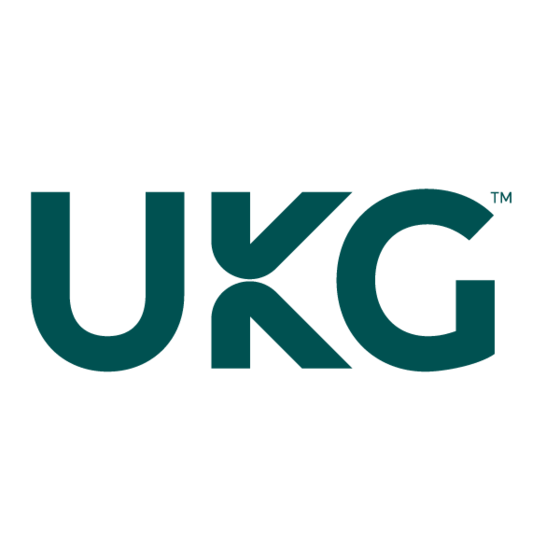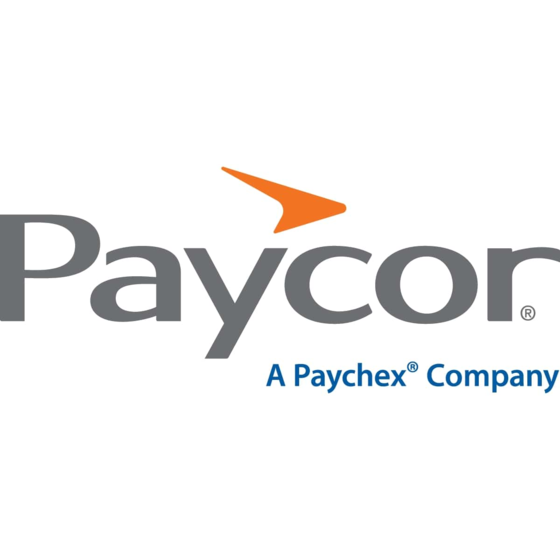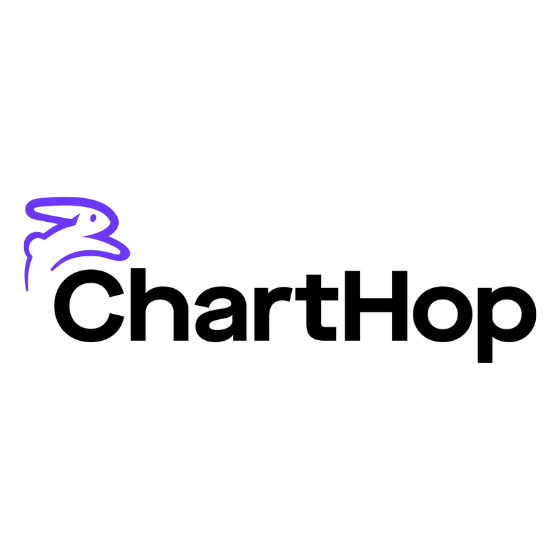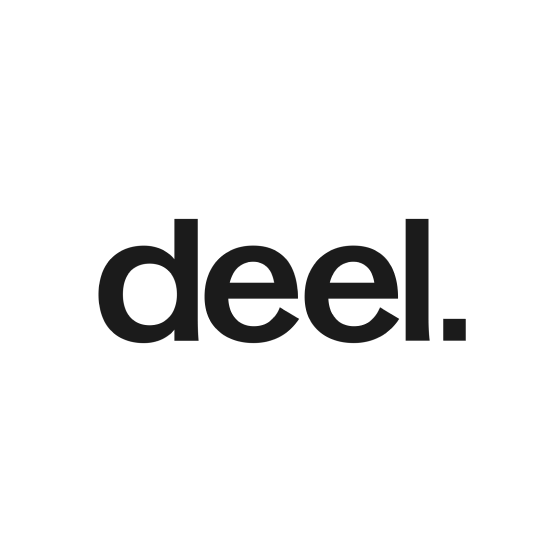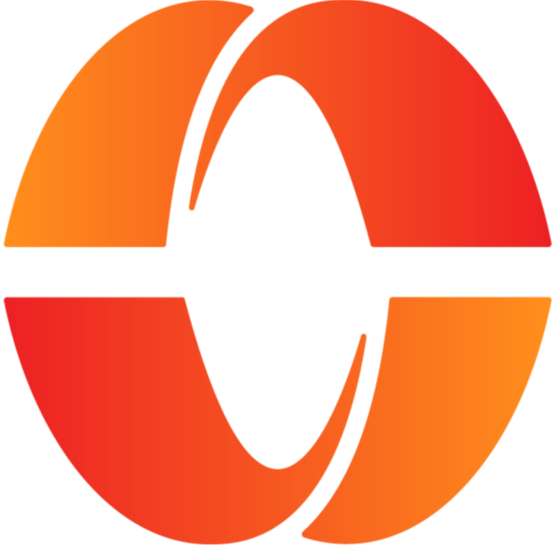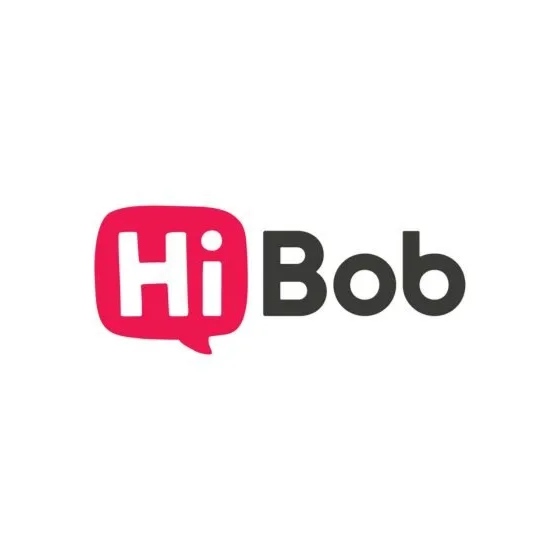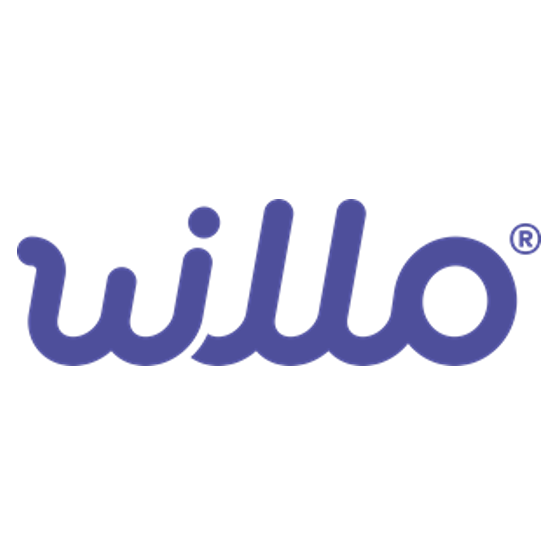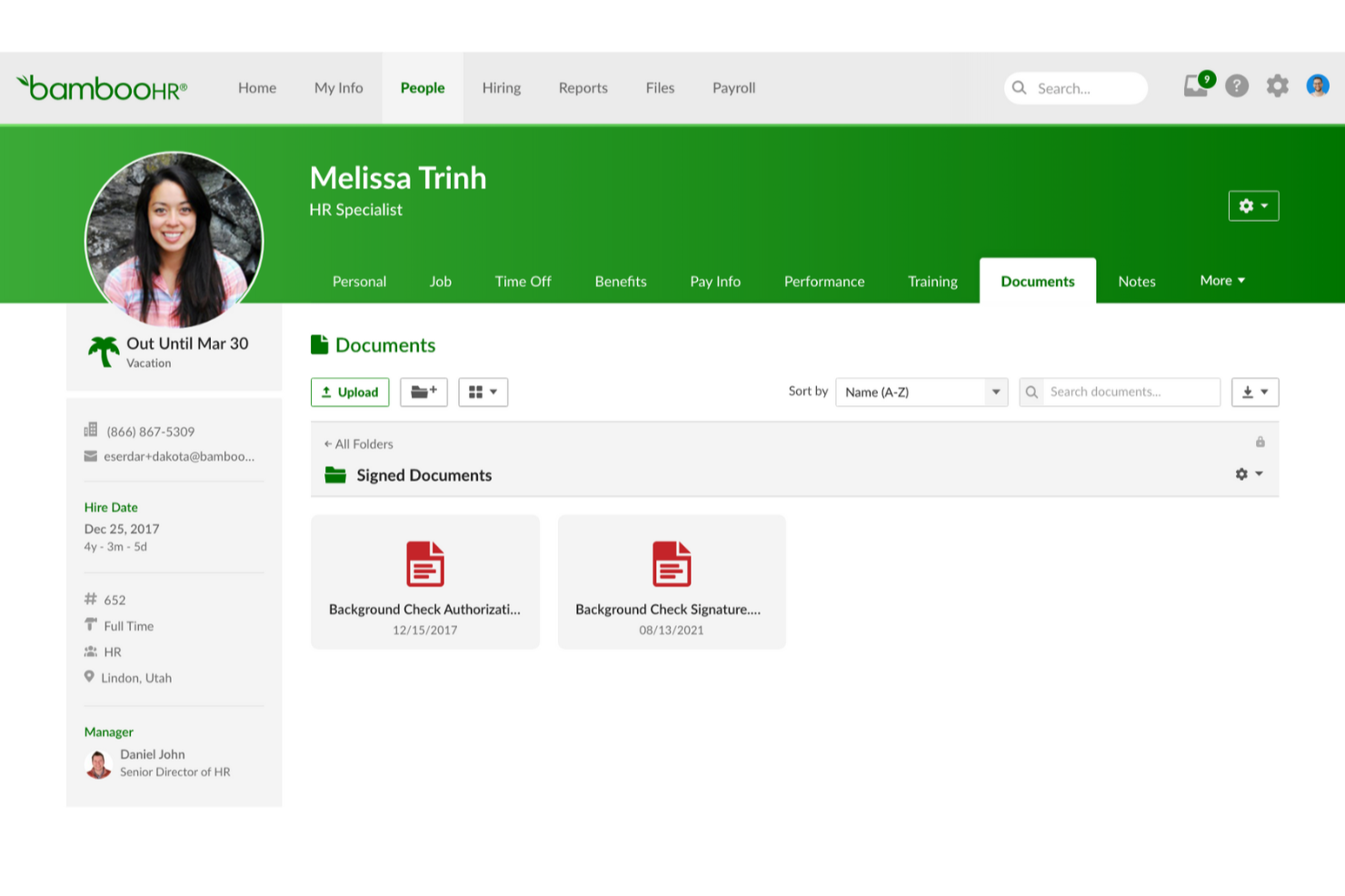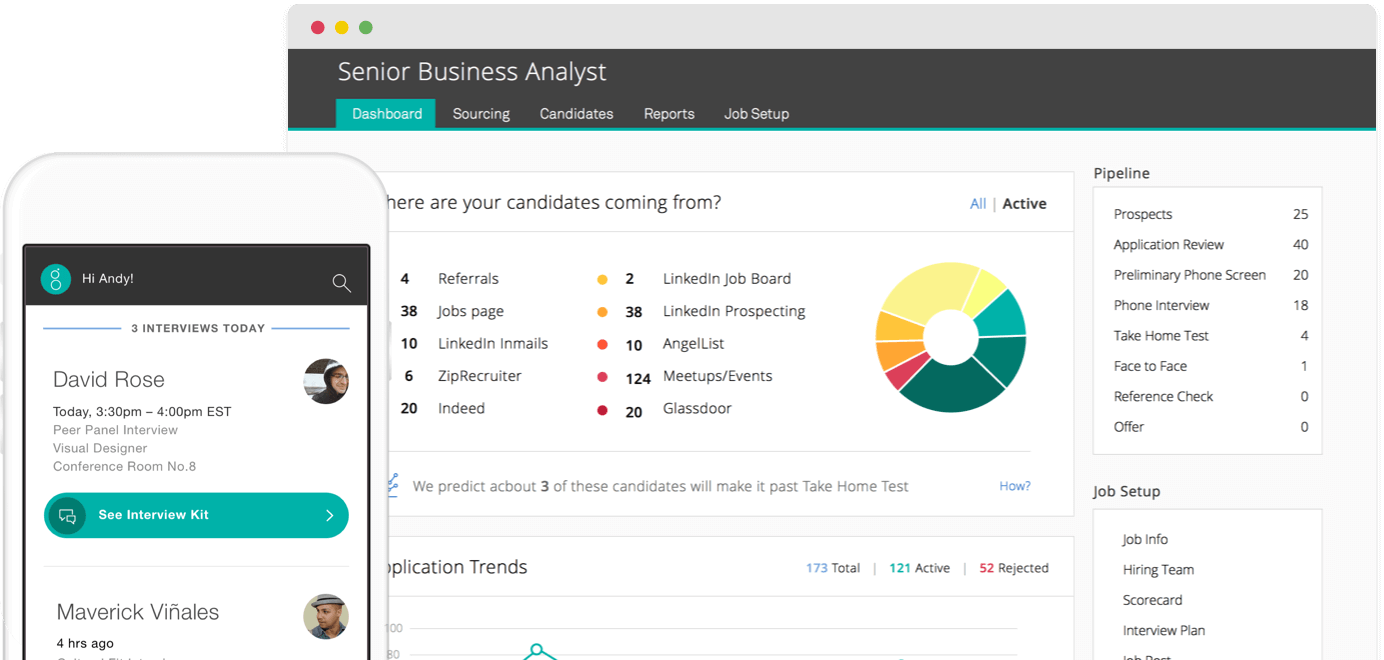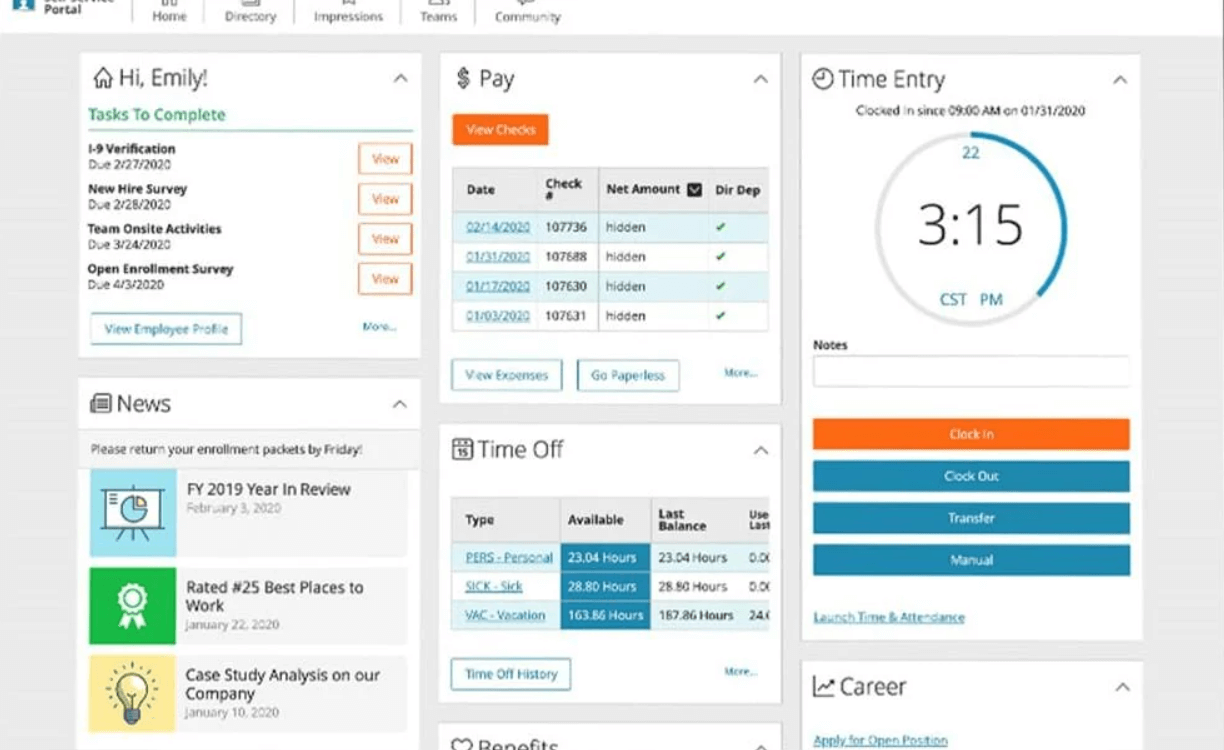10 Best HR Software for Small Businesses Shortlist
Here's my pick of the 10 best software from the 20 tools reviewed.
The best HR software for small businesses helps you streamline hiring, onboarding, payroll, and compliance, so you can spend less time on admin and more time supporting your people.
When you’re juggling multiple roles with limited resources, it’s easy for important HR tasks to slip through the cracks, leading to missed deadlines, compliance risks, or poor employee experiences.
From tracking applicants to managing time off, performance reviews, and workforce data, disconnected systems and manual processes can slow you down and create costly errors. The right platform centralizes these workflows, automates repetitive tasks, and gives you real-time visibility into your team’s needs and performance.
After 10+ years working with SMBs and evaluating dozens of HR tools hands-on, I’ve curated a list of solutions that are intuitive, affordable, and designed to scale with your growing team.
In this guide, you’ll find tools that not only simplify people operations but also help you make better talent decisions and improve employee engagement.
Why Trust Our HR Software Reviews
We've been testing and reviewing human resources software since 2019. We've tested more than 2,000 tools for different HR use cases and written over 1,000 comprehensive software reviews.
As HR professionals ourselves, we know how critical and difficult it is to make the right decision when selecting software, so we invest in deep research to help our audience make better software purchasing decisions.
Learn how we stay transparent, and take a look at our software review methodology.
Best HR Platforms for Small Business: Pricing Comparison Chart
This comparison chart summarizes pricing details for my top HR software selections to help you find the best HR software for your budget and business needs.
| Tool | Best For | Trial Info | Price | ||
|---|---|---|---|---|---|
| 1 | Best for full service payroll | Free demo available | From $8/user/month (billed annually) | Website | |
| 2 | Best for talent development and performance | Free demo available | Pricing upon request | Website | |
| 3 | Best for employee engagement and satisfaction | 7-day free trial | From $6.19/user/month (billed annually) | Website | |
| 4 | Best for AI-powered employee engagement tools | Free demo available | Pricing upon request | Website | |
| 5 | Best for feature-rich basic plans | 30-day free trial | Pricing upon request | Website | |
| 6 | Best for dynamic org charts | Free demo + free plan available | From $8/user/month | Website | |
| 7 | Best all-in-one global solution for SMBs | Free trial + demo available | From $29/month | Website | |
| 8 | Best for large recruitment pools | Free demo available | Pricing upon request | Website | |
| 9 | Best for employee experience tools | Free demo available | Pricing upon request | Website | |
| 10 | Best for core HR functions | Free demo available | Pricing upon request | Website |
-

Rippling
Visit WebsiteThis is an aggregated rating for this tool including ratings from Crozdesk users and ratings from other sites.4.8 -

Willo
Visit WebsiteThis is an aggregated rating for this tool including ratings from Crozdesk users and ratings from other sites.4.8 -

ChartHop
Visit WebsiteThis is an aggregated rating for this tool including ratings from Crozdesk users and ratings from other sites.4.3
Reviews of the Best HR Software for Small Businesses
Here you’ll find my overviews of the 10 best HR software I selected specifically for small and midsize businesses. In my research, I kept core HR challenges of SMBs in mind, like hiring and retaining top talent, ensuring legal compliance, and driving professional development. I’ve outlined each provider’s best use case, standout features, and pricing information.
Rippling is an all-in-one HR software that helps small businesses manage all aspects of employee management from one centralized location. With features such as automated onboarding, digital document storage and retrieval, and complete payroll processing, the software provides an efficient way to handle the most important HR tasks.
Why I picked Rippling: Rippling automates complex payroll functions, including federal, state, and local tax filings, helping small and mid-sized businesses remain compliant without the manual effort. Its global payroll capabilities support payments in local currencies across 185+ countries, making it a great fit for distributed teams. I also like that it supports both employee and contractor payments and offers mobile access.
Rippling Features and Integrations:
Features include automated payroll and tax filing, including detailed HR, payroll, and tax reports. The platform automatically calculates the hours worked, paid time off (PTO), benefits deductions, taxes, and withholdings during payroll processing. Accounting and payroll departments have the option to make payroll payments via check or direct deposit.
Rippling's onboarding tool also helps employers automatically set up employee accounts with all necessary information, such as tax forms, benefits packages, and company policies, which saves time and energy while ensuring accuracy.
Integrations include Slack, QuickBooks, Gusto, ADP, Greenhouse, Lever, Okta, Zoom, Google Workspace, Office 365, Dropbox, and Salesforce.
New Product Updates from Rippling
Rippling Now Integrates with Points North
Rippling's new integration with Points North automates certified payroll reporting, ensuring compliance with Davis-Bacon and prevailing-wage laws by synchronizing data in real time and reducing manual errors. More details at Rippling Blog.
Mitratech Trakstar is a comprehensive HR software solution designed to assist small businesses in managing various aspects of talent development. It offers tools for performance management, learning management, applicant tracking, and workforce analytics, all integrated into a single platform.
Why I picked Mitratech Trakstar: I appreciate its focus on talent development. The platform offers tools to help attract, retain, and engage top talent—key elements for any growing company. It includes the ability to conduct customizable performance reviews, set and track employee goals, and facilitate 360-degree feedback. These features enable you to align employee objectives with business goals and foster a culture of continuous improvement.
Additionally, Mitratech Trakstar's learning management system (LMS) lets you create and deliver engaging training content to support talent development and facilitate upskilling.
Mitratech Trakstar Standout Features and Integrations:
Features include workforce analytics that provide insights into employee performance and engagement, helping you make informed HR decisions. The applicant tracking system streamlines the hiring process by enabling collaborative recruitment and efficient candidate sourcing. It's also connected to onboarding workflows, making it easy to transform applicants into new hires.
Furthermore, to support employee engagement and improve retention, the platform offers engagement surveys to gauge employee satisfaction and identify areas for improvement. You can also filter and segment survey results into different groups and time periods to analyze how key changes have impacted different teams.
Integrations include ADP Workforce Now, Paylocity, BambooHR, Namely, Ramco, UKG Pro, Syntrio, SFTP, Azure, Okta, Salesforce, Zoom, GoToWebinar, and DocuSign.
BambooHR is a popular HR management solution made for small businesses that covers the entire employee lifecycle, from onboarding to offboarding.
Why I picked BambooHR: Their HR software is a great choice for small businesses because it covers a full range of core HR needs at an affordable price, with additional add-ons available depending on your needs.
Some of the most interesting features are around building company culture. You can create employee satisfaction surveys with anonymous feedback to learn what people think about work. You can then track this over time to see how your employee engagement efforts are paying off.
BambooHR Standout Features and Integrations:
Features include an employee database, hiring and onboarding tools, time off and benefits tracking, performance management, and employee experience and community-building tools. BambooHR also offers add-ons for payroll, benefits administration (US companies only), and time-tracking.
Their performance management module also helpfully connect performance tracking with compensation updates, promotions, and raises, making managers' lives easier.
Integrations include Slack, Deel, Lattice, Officevibe, TalentLMS, Bonusly, Lever, Payscale, Papaya Global, Oyster HR, and dozens more.
New Product Updates from BambooHR®
BambooHR Carrier Status Bar and Salary Proration Enhancements
BambooHR rolled out two updates to boost efficiency and accuracy. You can now track your carrier connection at a glance and let BambooHR handle salary proration for unpaid time off. Visit BambooHR®'s website for more.
UKG is an HR and workforce management platform that is specifically designed to meet the needs of small businesses. Its platform helps enhance workplace experiences through streamlined human capital management, simplified payroll, and smart workforce planning.
Why I Picked UKG: I chose UKG because of its strong focus on employee engagement through AI-powered tools. These features help small business owners manage their teams more effectively, ensuring employees feel valued and motivated. UKG’s solutions simplify HR and payroll tasks, making them easier to handle without needing a large HR department.
Another standout feature is UKG’s talent management capabilities. From recruiting and onboarding to retaining top talent, everything is managed in one place. This is especially beneficial for small businesses looking to build a strong team while maintaining a positive workplace culture—key to boosting satisfaction and reducing turnover.
UKG Standout Features and Integrations:
Features include AI-driven insights that help you make informed decisions about your workforce, a centralized platform for managing HR and payroll tasks, and tools for improving employee engagement. These features work together to create a more efficient and positive work environment for you and your team.
With UKG, you can focus on growing your business while ensuring your employees are happy and productive.
Integrations include Adaptive Security, Guru, Carbide, Bucketlist Rewards, Setyl, Applauz Recognition, Grayscale, RedFlag, Active Directory, NetSuite, BCBS (Blue Cross Blue Shield), and UNUM.
Paycor's HCM platform helps small businesses manage all aspects of HR, including payroll management, benefits administration, and compliance. In addition to its core HR offerings, Paycor provides a range of services, such as employee onboarding, performance management, and time & attendance tracking.
Why I picked Paycor: I included Paycor in this list because even their most basic plan covers a wide range of features. Plus, Paycor helps you identify talent gaps and create succession plans. Its talent management module provides you and your managers with data-driven insights into which employees are thriving and which ones may be struggling. This information can then be used to provide targeted training and development resources.
Additionally, its employee feedback tools help managers ensure that their team members are on track and meeting expectations.
Paycor Standout Features and Integrations:
Features include centralized employee data management, employee onboarding, time tracking, job costing, and new-hire reporting. You can confidently pay your employees on time and accurately track labor costs. The platform also helps users manage expense reports and mitigate risk with compliance tools.
Paycor also allows employees to view their own employee records and track their progress, empowering them to take control of their careers and ensuring that everyone is working towards the same goals. Managers can also set up automated reminders for their employees to submit their timesheets and review their vacation requests.
Integrations are available via 300+ pre-built connections to third-party applications, including, Mitratech AssureHire, Human Interest, Tilt, Emburse, Nectar, Sterling, Instant Pay, Goodhire, WEX, bswift, Humana, Indeed, and LinkedIn, and numerous others.
ChartHop is a data-centric HR platform designed to give small businesses powerful visibility into their people operations. It consolidates employee information and delivers AI-powered insights that can help you understand your workforce and plan strategically.
Why I Picked ChartHop: I chose ChartHop because of its exceptional ability to offer customizable, visualized organizational insights that many small businesses lack. Its dynamic org charts, headcount planning tools, and real-time dashboards help small companies see the bigger picture and manage growth intentionally.
Unlike some platforms that are only focused on admin tasks, ChartHop helps you understand your workforce trends and make smarter, long-term decisions. I also appreciate its tight integration with leading payroll, ATS, and HRIS platforms, which lets you easily connect your existing systems.
ChartHop Standout Features and Integrations:
Features include data-rich employee profiles, customizable data sheets, headcount planning, compensation reviews, and dynamic org charts. Its AI-powered dashboards highlight key trends in performance, compensation, and employee engagement. ChartHop also supports automated onboarding and offboarding workflows, plus user-friendly time-off management that integrates with Slack.
Integrations include ADP, BambooHR, Carta, Dayforce, Deel, Greenhouse, Gusto, HiBob, Justworks, Lever, Paylocity, QuickBooks, Paychex, SAP SuccessFactors, UKG, Workday, and more.
Deel is a comprehensive HR platform designed for businesses of all sizes. Deel's platform is user-friendly and integrates several features that make it easy to manage and pay workers compliantly without juggling multiple tools.
Why I picked Deel: For small businesses and startups, Deel has made their new HR tools free, so it’s an excellent option for onboarding and managing additional help. Furthermore, Deel’s global compatibility lets you hire and manage freelancers and employees in 150+ countries without having to figure out local laws, tax systems, or international payroll management.
Deel Standout Features and Integrations:
Features include contract and stock option management, expense reimbursements, compliance documentation tracking, and 24/7 online chat support. Employees and contractors can self-manage their pay and personal data, which reduces admin load.
Deel uses major payment providers like Wise, PayPal, Payoneer, and Revolut to offer flexible withdrawal options and reduce unnecessary international transfer fees.
Integrations are available with Ashby, BambooHR, Expensify, Greenhouse, Hibob, Netsuite, Okta, OneLogin, QuickBooks, SCIM, Xero, Workday, and Workable.
They also have an Open API solution that allows developers to build their own interfaces on top of the Deel platform too.
Greenhouse is a recruiting, hiring, and employee onboarding software that provides a basic plan that's well-suited to the needs of small businesses.
Why I picked Greenhouse: You can reach a much wider candidate pool through the software, and post on over a thousand job boards. The software helps you post on the most relevant boards with smart recommendations based on industry performance and historical data. Included boards are both niche sites as well as major job marketplaces.
You can keep track of all your candidate's contact information in the platform's contact database. You can also use that data to craft personalized follow-ups, interview requests, and other candidate engagement communications. The platform has automation tools to help you reduce the workload of keeping up with candidate communications, too.
Greenhouse Standout Features and Integrations:
Features include scorecards for screening applicants and tools to conduct your screenings anonymously to ensure fair and consistent evaluation. Once you've hired an employee, the software has a complete set of onboarding tools to help you get them up and running quickly.
Integrations include Broadbean, Canditech, Cord, Docusign, Dropbox, FlexJobs, Google Meet, Indeed, Microsoft Teams, Paradox, and Seek.
Paylocity offers a range of payroll management and HR tools. Their solution for small businesses is focused on making performing HR tasks as simple as possible.
For example, the self-service tool gives employees all they need to answer simple HR questions independently. They can access pay stubs, PTO balances, and direct deposit information on their own. This can cut down the amount of time you and your HR team members spend on common tasks while improving overall employee autonomy.
In addition to its self-service portal, Paylocity improves employee experience through a community hub where employees can connect and collaborate with each other, and recognition and rewards tools to ensure all efforts across the company are acknowledged and appreciated.
They also offer payroll automation features that will cut down the amount of time you spend on this task. HR managers can automatically track time and attendance, so payday is always on time and the right amount.
Paylocity has a robust app marketplace with over 300 integrations. Key integrations to note include Betterworks, BreezyHR, ClearCompany, Culture Amp, Engagedly, HiBob, iCIMS, Kallidus, SkyPrep, QuickBooks Time, and others.
HiBob is an HR platform designed to simplify people management and enhance the work experience for employees. It's tailored to support various work models, including onsite, remote, and hybrid setups, making it versatile for today's dynamic business environments.
Why I picked HiBob: HiBob’s core HR functionalities make it a strong choice for small businesses looking to streamline their HR processes. The platform automates key HR tasks, such as storing employee records, managing time-off requests, and maintaining compliance with labor laws.
I also like that it offers 360-degree performance reviews that incorporate feedback from managers, peers, and employees themselves. This structured approach ensures that employees receive fair evaluations and meaningful insights to improve their performance. Another reason I picked Bob is its time and attendance management. Employees can clock in and out easily—whether they are in the office or working remotely—using Bob’s web platform or mobile app.
HiBob Standout Features and Integrations:
Features include onboarding automation, which helps small businesses create structured onboarding experiences for new hires, ensuring they feel welcomed from day one. Additionally, compensation management allows businesses to run salary reviews, manage bonuses, and ensure fair pay practices while keeping stakeholders aligned on budget decisions.
Integrations include DP, Deel, Papaya Global, Azure Active Directory, Google Workspace, Slack, Google Sheets, Asana, Microsoft Teams, NetSuite, and Breezy.
Other Small Business HR Solutions
Are none of the above tools a good fit for your organization? Then here are some options that didn’t make our top list but might be a good choice for the right business. You can also check out our article on the overall best HR tools for more advice.
- Agendrix
For managing clock-ins/outs
- RemoFirst
For global payroll options
- Workable HR
For customizable onboarding workflows
- Paychex Flex
For integrated payroll and benefits
- Breathe HR
For UK small business HR automation
- Bambee
For automatic compliance monitoring
- GoCo
Dedicated HRIS customer service
- Eddy
For local businesses with deskless workers
- Factorial
For linking team calendars and scheduling
- Kallidus Sapling
For scalability
Related HR Software Reviews
If you still haven't found what you're looking for here, check out these other related tools that we've tested and evaluated:
- HR Software
- Payroll Software
- Recruiting Software
- Employer of Record Services
- Applicant Tracking Systems
- Workforce Management Software
Selection Criteria for HR Software for Small Businesses
Selecting the best HR software for small businesses requires an understanding of how these tools can help solve common frustrations small businesses face when trying to manage HR processes efficiently.
My approach to creating this list is grounded in thorough research into how these tools can solve the needs of business owners and employees alike.
I also drew on my years of experience as an HR professional to pinpoint the key features that add a lot of value and cut down on time-consuming processes.
Here's a short summary of the selection criteria I used to build this list of the best HR platforms for SMBs:
Core HR Software Functionalities (25% of total score): To be considered for inclusion in this list, each solution had to fulfill these common use cases first:
- Core HR data management capabilities that centralize all your employee data
- Integrated modules for easy digital data management
- Some form of employee self-service module to reduce administrative requests
- Tools to manage the recruiting and hiring process, payroll process, time and attendance tracking, or performance management processes
- Customizable user roles and permissions to curate who can access your employee data
In this case, since HR software is a very broad category, determining the core functions was a little trickier than usual!
However, I also intentionally included a broad set of tools in this list. As a result, each software system in this list is a top choice within its area of expertise and has something unique to offer.
Additional Standout Features (25% of total score): To help differentiate one HR system from another, I also keep a keen eye out for any unique features, including:
- Advanced analytics and reporting capabilities that offer deeper insights into HR metrics
- Customizable dashboards and workflows to suit specific business needs
- Integration capabilities with other business tools and systems for seamless operations
- Built-in notifications and alerts to ensure no key details or changes slip through the cracks
- Data visualization tools that represent your workforce data visually in charts, graphs, or dynamic dashboards
- A user-friendly mobile experience or dedicated mobile apps for Android and iOS mobile devices
Usability (10% of total score): To evaluate the usability of each HR software, I considered the following:
- An intuitive design that simplifies complex processes and requires minimal training to master
- Quick access to essential features without overwhelming users
- A clean, user-friendly interface that you can customize with your company branding to enhance the user experience
- Role-based access control that's straightforward to configure
Onboarding (10% of total score): To get a sense of each software provider's customer onboarding process, I consider the following factors:
- The availability of best practice guides to streamline the setup process
- Whether comprehensive training materials are available, including videos and interactive tutorials, to speed up internal training for new users
- Customizable templates that are easy to adapt to speed up onboarding
- Evaluating the availability of dedicated customer success managers or on-call customer support teams, including 24/7 help via chatbots
- Support for migrating employee data into the new platform
Customer Support (10% of total score): To evaluate the level of customer support each vendor offered, I considered the following:
- The availability of multiple support channels, including email, phone, and chat
- Whether they offer a customer-facing knowledge base, FAQs, or other self-service tools to aid problem-solving
- Whether customer support is only available within specific time frames or zones, or 24/7 via chatbots
- The overall quality, responsiveness, and helpfulness of the support team during customer onboarding and post-purchase, as inferred from customer reviews
Value for Price (10% of total score): To gauge the value of each software, I considered the following factors:
- The availability of free trials or demos to test the software before purchasing
- Transparent pricing models that clearly explain which features are included at each level, with no additional hidden costs for training or set-up
- Tiered pricing plans with an option catered specifically to small businesses' needs with the option to scale up over time
Customer Reviews (10% of total score): Evaluating customer reviews is the final element of my selection process, which helps me understand how well a product performs in the hands of real users. Here are the factors I considered:
- Whether a product has consistently high ratings across multiple review platforms, indicating a broad level of user satisfaction
- Specific praises, criticisms, or trends in customer feedback that indicate the software's strengths or areas for improvement
- Whether customer feedback specifically mentions issues with ease of use, customer support responsiveness, or lacking features
- Any testimonials that highlight how a platform solved a particular challenge or adapted to changing business needs
Using this assessment framework helped me identify the HR software that goes beyond basic requirements to offer small businesses additional value through unique features, intuitive usability, smooth onboarding, effective support, and overall value for price.
For HR professionals, it’s about reducing manual work… The more automation and workflow integration you can get, the better.
How to Choose HR Software For Small Businesses
As covered, HR software can help small businesses solve many talent management challenges and improve numerous processes.
To help you get clear on what you need, as you work through your own unique HR software selection process, keep the following points in mind:
Remember, every business is different — don’t assume that an HR system will work for your small business just because it's popular.
| Factor | What to Consider |
|---|---|
| HR Challenges | - High manual data entry - Repetitive, time-consuming tasks - Hard-to-track compliance - High volume of admin requests from employees - Inefficient recruiting |
| Desired Outcomes & Success Metrics | - Improved efficiency and productivity - Fewer repetitive tasks via workflow automation - Real-time, accurate compliance data - Fewer admin requests via self-service - Better time-to-hire and candidate quality |
| Primary Users | - Who needs access: entire HR team or select users? - How many licenses? - Rank needs of HR power users, managers, and employees |
| Budget | - Current headcount and 5–10 year projections - Estimate cost per employee per month - Assess potential ROI |
| Integration Needs | - Will it replace or integrate with existing tools? - Required integrations: accounting, payroll, time tracking, internal comms - API availability/customization |
| Consolidation Opportunities | - Can multiple tools be replaced with one platform? - Potential to reduce monthly SaaS costs |
| Technical Requirements | - Compatibility with current workflows and systems - Support for problem areas |
| Security & Workspace Integration | - Support for security features (e.g., 2FA) - Integration with corporate tools like Microsoft SharePoint or Google Workspace |
How to Implement HR Software
After selecting the ideal HR system for your organization, the next step is crafting a solid implementation plan to integrate the software into your current workflows and equip your team with the knowledge they need to use it effectively.
Your implementation plan should include the following key components:
- Establishing a clear strategy and timeline for implementation
- Engaging stakeholders and securing their input
- Developing a communication plan with clear ownership of responsibilities
- Rolling out the system in phases to make the transition smoother
- Providing internal training sessions and ongoing support
- Encouraging user adoption to overcome resistance to change
- Preparing and cleaning your data before migrating it to the new system
- Running test scenarios for critical processes, such as multiple payroll simulations or a mock performance review cycle
- Officially launching the system, addressing any questions or concerns, and ensuring regular maintenance
If you’re looking for detailed guidance, our comprehensive guide on implementing HR software is a great resource. It even includes an HR software implementation checklist to simplify the process!
Assembling a diverse implementation team is also essential. Make sure it includes representatives from key stakeholder groups and end-users to ensure everyone’s needs are considered.
Keep your implementation process straightforward to avoid unnecessary complications.
Trends in HR Software for Small Businesses in 2025
Successful small businesses stay ahead of the curve—and the software that propels you needs to do the same! HR software is continuously evolving to keep pace with the changing nature of running a small business.
Here are some of the trends I'm seeing (and anticipating) in these tools:
Integration with AI and machine learning
There's a clear trend towards leveraging AI and machine learning to automate and enhance decision-making processes.
This includes AI-driven candidate screening tools to support the hiring process, predictive analytics for employee performance, and automated payroll systems. These features are rapidly evolving, with software increasingly able to handle complex tasks with minimal human intervention, suggesting a shift towards more predictive and personalized HR management.
Enhanced data security and privacy
With the increasing digitization of HR processes, data security and privacy features have become paramount.
The latest updates show a significant emphasis on advanced encryption methods, secure data storage solutions, and compliance with global data protection regulations.
This trend is a response to the growing concern over personal data security in digital platforms.
Mobile accessibility
The push for mobile accessibility continues to be a critical trend. HR software is becoming more mobile-friendly, with HR apps or mobile-optimized web interfaces that allow managers and employees to access information and perform tasks from anywhere.
This trend caters to the increase in mobile workforces and the need for flexibility in accessing HR services.
These emerging trends in HR software are not just technological advancements; they are strategic tools addressing the key pain points and needs of HR professionals in small businesses.
Adopting these trends can streamline operations, improve efficiency, and foster a more engaged and compliant workforce.
These trends demonstrate a significant shift towards more intelligent, flexible, and secure HR software solutions that help small businesses stay adaptable, agile, and poised for future growth.
What is HR Software For Small Businesses?
HR software for small businesses is a tool that helps manage essential people operations processes like hiring, onboarding, payroll, and performance tracking. It streamlines administrative tasks, reduces manual work, and helps ensure compliance with labor laws. By centralizing HR functions, it allows small businesses to save time, improve employee experience, and focus on growth.
Features of HR Software for Small Businesses
Choosing the right HR system for your small business is crucial to ensure your internal processes run smoothly.
Plus, it's also important to ensure the HR system you choose is compliant with the industry standards and regulations in your jurisdiction.
For example, leading HR platforms that serve clients in the US should comply with the CCPA (California Consumer Privacy Act), while HR software designed for European clients should comply with data security regulations like GDPR (General Data Protection Regulation).
Many systems also strive to match the Fair Labor Standards Act (FLSA) in the US, or meet ISO 27001 standards for information security management, ensuring the protection of sensitive employee data.
Here are the most important features to look for as you're considering different human resources management software:
- User-Friendly Interface: The software can have all the features in the world but without a straightforward and intuitive user interface it's unlikely to be used to its full potential. Ease of use is crucial for the adoption and effective utilization of the system across the organization.
- Payroll Processing or Integrations: Software with built-in payroll management functions, or integrations with other payroll systems will simplify your payroll process, reduce errors, and run payroll faster. These payroll modules can often manage tax filing at the local and federal levels too. One AI-based solution reduced one SMES payroll run to an hour per month!
- Compliance Management: Monitoring changes to labor laws and regulations is a constant challenge. HR software that offers compliance management features helps ensure that businesses stay on top of these requirements, reducing the risk of penalties.
- Employee Self-Service Portal: Empowering employees to manage their personal information, request time off, and access payslips reduces the administrative burden on HR.
- Applicant Tracking System (ATS): An ATS streamlines the hiring process by organizing and simplifying candidate tracking and communication. These tools can help you manage your job postings, schedule interviews, send out offer letters, and more. They're super valuable for small businesses looking to improve their hiring efficiency and attract the best talent.
- Performance Management Tools: Effective performance management tools help teams set, track, and review employee goals and performance. This feature is key to aligning individual objectives with the company’s goals and fostering a culture of continuous improvement.
- Attendance Tracking & Time-Off Management: These combined features help small businesses manage timesheets, PTO, overtime, absences, and leave balances efficiently. Accurate time tracking is also essential for payroll accuracy and labor compliance.
- Employee Lifecycle Management: Another helpful feature for small but growing companies is setting up automated employee onboarding processes and employee offboarding workflows. Just create a list of all the things new hires need to do before starting, send them a link to your tool, and they can work through the tasks independently.
- Reporting and Analytics: Access to real-time data and analytics enables businesses to make informed decisions. This feature provides insights into HR metrics, such as turnover rates and hiring efficiency, helping businesses identify trends and areas for improvement.
- Cloud-Based Technology: Access to HR functions from anywhere at any time is essential, especially with the rise of remote work. Cloud-based HR management software offers flexibility, scalability, and less investment into IT resources, allowing businesses to adjust as they grow.
- Mobile Accessibility: With the increasing reliance on smartphones for professional purposes, mobile accessibility allows employees and managers to access HR functions on the go, providing a more flexible employee experience.
Benefits of HR Software for Small Businesses
In my experience, investing in HR software will make your human resource functions more efficient and effective.
Modern HR solutions can reduce administrative burdens, create a better employee experience, and help you uncover actionable insights for better talent management.
By selecting the best HR software for your needs, you can expect to gain the following benefits:
Increased efficiency
HR software automates routine tasks, freeing up time for HR staff to focus on strategic initiatives.
This automation reduces the time spent on administrative tasks, allowing HR personnel to concentrate on more value-added activities.
One study found that implementing a new HRIS helped save one SMB $175k in one year.
Streamlined data management
By centralizing HR data, HR management software ensures that all employee information is stored in one place, making it easily accessible.
This ensures that all employee records are kept up-to-date and can only be accessed or updated by authorized personnel, reducing the risk of data discrepancies and loss.
Enhanced decision-making
With access to real-time data and analytics, HR software provides insights that aid in informed decision-making. This enables businesses to make strategic HR decisions based on accurate and up-to-date information.
Improved compliance
By keeping track of changing labor laws and regulations, HR software helps ensure that businesses remain compliant. This reduces the risk of legal issues and penalties associated with non-compliance.
Enhanced employee experience
Most HR platforms offers employee self-service portals that empower employees to manage their personal information, submit time-off requests, tap into digital document management tools, and access their payroll and benefits information online.
This level of autonomy improves the overall employee experience, leading to higher engagement and satisfaction levels.
HR software for small businesses can help you manage your HR functions more efficiently and effectively. From improving compliance and decision-making to enhancing your employee experience, the benefits are clear.
For small businesses looking to streamline their HR processes and focus on growth, investing in HR software is a step in the right direction. Read more in our article on the benefits of human resource management software.
Implementing better technology can change the entire work environment. When people aren’t frustrated by systems that don’t work, it makes them more willing to engage and feel positive about their workplace.
Costs & Pricing for HR Software for Small Businesses
HR software solutions offer different pricing options to meet the diverse needs of small businesses.
These plans typically range from basic free versions to more advanced packages with additional features.
Understanding the specifics of each plan will help you choose the most suitable option for your business needs and budget.
Plan Comparison Table for HR Software
| Plan Type | Average Price | Common Features |
|---|---|---|
| Free | $0 | Employee self-service, basic reporting, and access for a limited number of users |
| Basic | $4-7 per user/month | Employee self-service, payroll processing, basic reporting, and email support |
| Standard | $8-12 per user/month | Basic features plus time and attendance tracking, performance management, and chat support |
| Premium | $15-30 per user/month | Standard features plus advanced reporting, HR analytics, priority support, and custom integrations |
When selecting the best plan for you, consider your current and future needs. A free or basic plan might suffice for now, but if your business is poised to grow, a standard or premium plan may be a better fit for the HR features you need.
If cost is your biggest factor, this article digs into the costs of HR software and how you can decide what's best for your company.
Frequently Asked Questions
Here are some answers to popular questions we hear often about HR software for small businesses:
What is the best HR software for small businesses?
The truth is that there is no overall solution that will be the best fit for all businesses. As no two solutions are the same, the best is the one that can match your specific requirements.
How scalable are HR software solutions for growing businesses?
Many HR software solutions are designed with scalability in mind, making them a great fit for growing businesses. They often allow you to easily add new users, functionalities, or modules as your company expands. This flexibility ensures that as your business evolves, your system can grow with you, adapting to new challenges without requiring a complete system overhaul.
What kind of customer support and training do HR software companies offer?
HR software companies usually offer customer support and training through a mix of:
- Online resources and self-serve content (videos, knowledge base, tutorials, etc.)
- Live support (chat, phone, video, etc.) and email support
- Training and onboarding programs
- User-generated support content (forums or communities)
The depth and availability of these resources can vary from one provider to another, and from one plan tier to another. Finding an HR software provider with sufficient support offerings is particularly important for small businesses that may be operating without internal HR expertise.
How do HR software systems manage data security and compliance?
Human resources software protects sensitive employee data — like personal information, salaries, contracts, and performance evaluations — using robust cybersecurity measures, including encryption, firewalls, and multi-factor authentication. Regular risk assessments are also conducted by HR software companies to help identify and mitigate potential vulnerabilities, and incident response plans ensure swift action in case of data breaches.
Most HR management software complies with global data protection regulations — such as GDPR, HIPAA, and SOC 2 — to ensure they meet legal standards for data privacy and security. Businesses should also assess the data security practices of any third-party HR software or services they use to ensure they follow the same strict data security protocols.
This article offers more details into data management best practices if you’re interested in learning more.
What HR software features are must-haves for small businesses?
You’ll want core features like employee records management, payroll integration, time off tracking, onboarding workflows, and basic reporting. For small teams, user-friendly dashboards and automation tools save you time. Look for platforms offering self-service options for employees.
How do I choose the right HR software for a business with fewer than 50 employees?
Start by listing your must-have features—think essentials like payroll, leave management, and compliance support. Look for software with simple pricing, easy setup, good support, and the right integrations. Choose a tool that can grow with you but isn’t overloaded with unnecessary extras.
Can HR software integrate with my existing payroll or accounting tools?
Yes, many HR software solutions integrate with popular payroll and accounting programs. Check the integrations list before you buy, or ask the vendor about compatibility. Easy integrations help you avoid manual data entry and reduce errors, which saves time and headaches.
Is there free or low-cost HR software that’s actually good for small businesses?
Yes, several reputable HR tools offer free or affordable plans tailored for small businesses. For example, Zoho People has a free tier for up to five users. Homebase provides a robust free plan for basic scheduling and time tracking. Freshteam by Freshworks offers a free plan for businesses with up to 50 employees. These tools cover essentials like employee records, leave management, and time tracking, so you can start managing HR tasks without a big upfront cost.
How can HR software help me stay compliant with labor laws?
HR software can send policy reminders, store required forms, and automate recordkeeping so you can meet your legal obligations. Some tools offer built-in compliance checks, alert you about deadlines, and update templates as laws change. This reduces risk and helps you stay audit-ready.
Other HR Resources for Small Businesses
Working within a tight budget can sometimes be stressful. However, we have a lot of other software lists that were specifically prepared with that in mind.
Here are our top resources for small businesses you should check out next:
- Applicant Tracking Systems for Small Businesses
- Employee Scheduling Software for Small Business
- ERP Systems for Small Businesses
- Expense Management Software for Small Businesses
- Free Payroll Software for Tight Budgets
- HRMS for Small Business
- HRIS for Small Businesses to Manage HR Data
- Learning Management Systems (LMS) for Small Businesses
- Payroll Services for Small Businesses
- Payroll Software for Small Businesses
- Recruitment Software for Small Businesses
Small Businesses Need Tools to Support Their HR Operations
Many small business owners become Jacks of all trades. They end up taking on not just the strategic and operational side of running a business but also people management, HR, accounting, compliance, and more.
Investing in the right software solutions and tools to help support you will make a world of difference, and finding the best HR platform for your small business is one step in the right direction.
To discover more of the best tools for your various small business needs, and get expert insights from industry leaders, be sure to sign up for the People Managing People newsletter.


